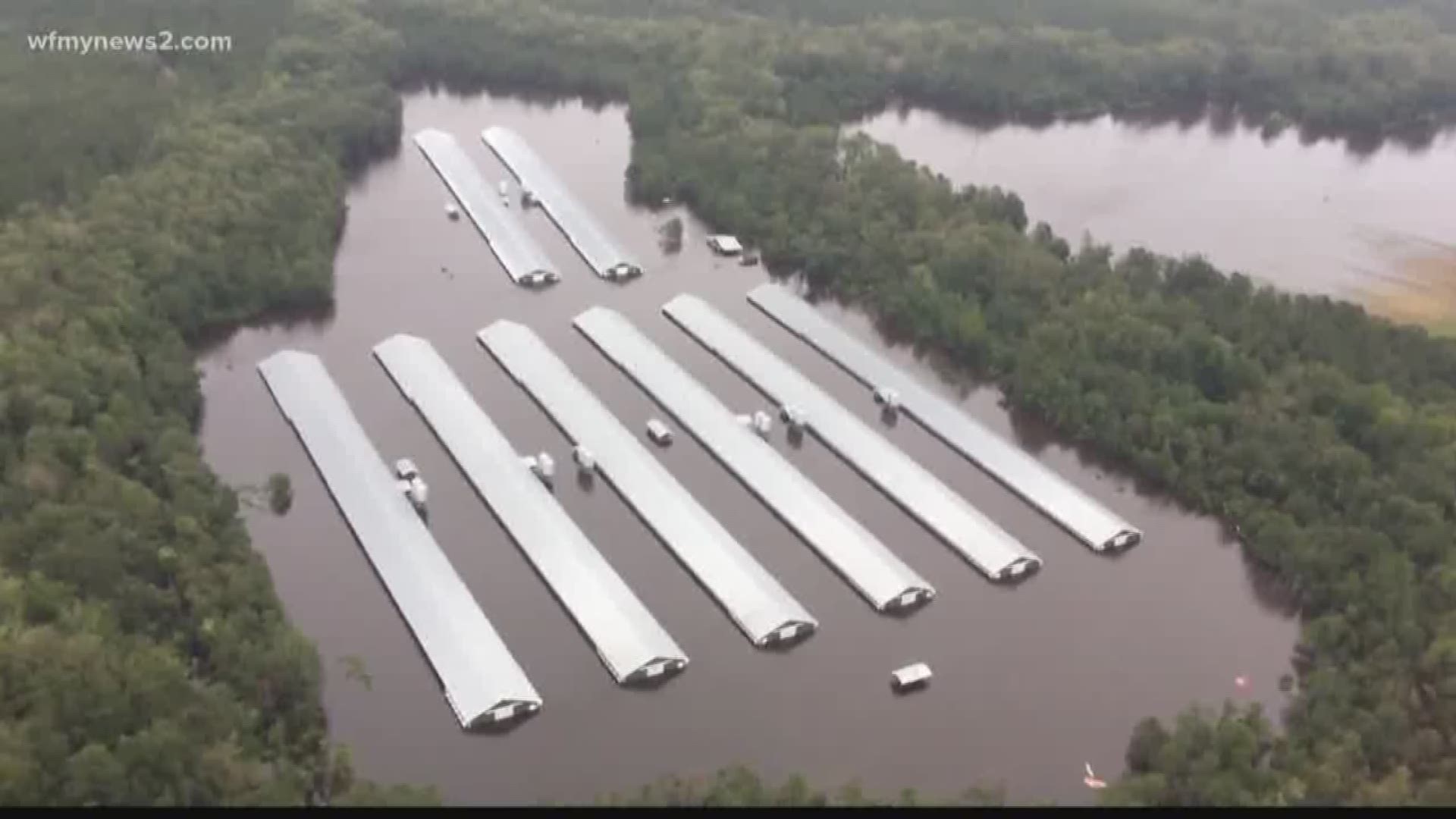GREENSBORO, N.C. - Hurricane Florence is testing the resolve of farmers in the Carolinas, who could face billions of dollars in agricultural damage while still feeling the sting from Hurricane Matthew in 2016.
Poultry, hog, and sweet potatoes are some of the big money makers for the state of North Carolina. However, due to the impact Hurricane Florence, those things, as well as various agricultural products, could be in short supply as they make their way to your kitchen table.
The state's Agriculture officials say the storm has crippled many farmers in the East. More than 3.5 million chickens and turkeys and 5,500 hogs were lost to floods from Florence.
Early farm reports confirm pre-storm worries about losses to tobacco, cotton and corn crops. North Carolina industry leaders remain anxious about whether sweet potatoes and peanuts will suffer greatly as well.
North Carolina Agriculture Commissioner Steve Troxler said Thursday he expected total farm monetary losses to be in the billions in the state. South Carolina crop damage is currently estimated at $125 million.
Tobacco could take the biggest hit among North Carolina field crops. North Carolina is the nation's top producer of tobacco, which remains one of the most valuable crops for farmers. About 40 percent of it was still in the field when Florence arrived, and an industry group projected leaf losses could be $350 million.
Industry analysts say because the hardest hit counties are major agro-producers, consumers will eventually feel the impact of Florence.
"This is extremely difficult for agriculture this year. Hurricane Matthew was a major storm that came through and the footprint (of Florence) was the same," Mike Yoder of NC State University's Cooperative Extension.
Matthew cost the state's agro-industry $400 million in October 2016. With many unharvested cash crops like peanuts, soybean, and cotton taking a hit, officials say losses from Florence could be in the billions.
"When you look at corn and soybeans, we are going to see an increase in the market prices in the Eastern parts of the country, at least until we see more corn being harvested in the Midwest," said Yoder.
"The other thing that is going to be an issue is the transportation of these foods because a lot of the roads leading to these areas are still not passable," said Dr. Michelle Eley of NC A & T University's Cooperative Extension.
Eley adds that producers and businesses, like restaurants, who rely on local supplies, would be the first to feel the impact.
"For the small farm community, a lot of things that we have to keep in mind is that because they are small farms a lot of their revenue that they would have received during the course of this time may be lost to them."

